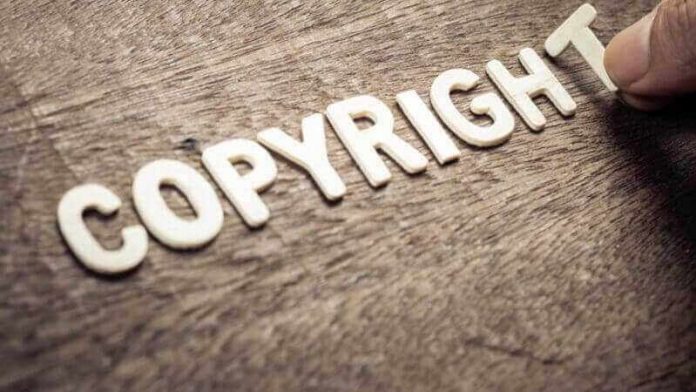This article was written by Viraj Sadvilkar, pursuing the Diploma in Intellectual Property, Media, and Entertainment Laws Course from LawSikho, and edited by Koushik Chittella.
This article has been published by Shashwat Kaushik.
Table of Contents
Introduction
In the current world of making things like art and writing, it’s really important to keep your arts and inventions safe from being copied by others. Copyright registration helps with that. It’s like a super-strong lock that gives you, as the creator, special rights to your work. This article will explain all about copyright registration, from the simple stuff to the more complicated parts.
You must have heard about the word “copyright” numerous times, especially in the world of digital media. Let us assume that you are a Youtuber and have been posting daily content on your Youtube channel, and one fine day it comes to your attention that one of your videos is being copied and posted entirely on some other channel. You will surely be shocked & amazed. But what will be your next step? How will you stop such channels from publicly broadcasting your video on their channel any further? Well, this is where copyright comes into the picture, and in order to understand how copyright plays a vital role here in protecting one’s original content from being copied, we need to first understand what copyright actually is.
Historical background of copyright
The concept of copyright emerged with the invention of the printing press. In 1710, the Statute of Anne in England was often considered the first copyright law. Copyright laws spread to other countries vastly during the coming centuries. In India, the evolution of copyright law started way back in 1914, during the British regime. This is when the first copyright law in India was enacted, though it was a complete replica of the English copyright law of 1911. This Act, post-independence, became the Copyright Act, 1957. As time progressed, India became a member of the Berne Convention, Rome Convention, UCC, TRIPS, WIPO, etc. for the sole purpose of giving international recognition to copyright laws. Thereafter, the Copyright Act, 1957, was amended to suit the needs of Indian complexities and culture, with the latest amendment being made in 2012.
Understanding copyright
Before we dig into the actual registration process, it’s essential to grasp the fundamentals of copyright. Copyright, in simple terms, means “the exclusive right to publish or record a work.” It is basically the right to copy, i.e., the owner has an exclusive right to his work and is entitled to make copies of the same. Copyright is a form of intellectual property protection granted to the creators of original works, encompassing a wide range of creative expressions such as literary works, music, art, and more. As soon as a work is created and fixed in a tangible medium, copyright protection is automatically granted. Section 13 of the Copyright Act, 1957, enumerates the various types of works in which a copyright exists:
- Original literary, dramatic or musical works;
- Original artistic work;
- Cinematograph films;
- Sound recordings;
- Computer programmes.
Rights conferred by a copyright
Section 14 of the Copyright Act, 1957, states the various rights that are conferred upon the copyright owner. These rights are exclusive and empower the copyright holder to exercise control over their work. Some of these rights include:
- Reproduction of the work: The copyright owner has the exclusive right to reproduce the work in any material form. This means they have the sole authority to make copies of their original work.
- Issuing copies to the public: The copyright holder has the exclusive right to issue copies of the work to the public. This includes the distribution of physical copies as well as making the work available to the public through electronic means.
- Public performance: The right to perform the work in public is vested in the copyright owner. This is particularly relevant for works like plays, musical compositions, and other performance-based creations.
- Public display: The copyright holder has the exclusive right to display the work in public. This applies to visual arts, sculptures, and other works that are meant to be visually experienced.
- Adaptation and Translation: The right to make adaptations or translations of the work is within the purview of the copyright owner. This ensures that any modification or translation of the original work requires the copyright holder’s permission.
- Broadcasting: The exclusive right to communicate the work to the public by broadcasting is granted to the copyright owner. This includes both radio and television broadcasts.
- Communication to the public: This right encompasses the communication of the work to the public, covering modes beyond broadcasting. It recognises the evolving nature of technology and includes activities such as making the work available online.
- Commercial rental: The right to commercially rent or lend the work is also reserved for the copyright owner. This is particularly relevant to the rental of physical copies of works like books, sound recordings, or computer programmes.
The benefits of applying for copyright registration
Copyright is established the moment a work is created, and no formalities are necessary for its acquisition. However, registering your copyright with the appropriate authorities offers many benefits. These include:
- Legal Presumption of Ownership: Registration creates a legal presumption of ownership, making it easier to assert your rights in cases of legal disputes. The certificate of copyright registration and the recorded entries therein act as prima facie evidence in legal proceedings, particularly in disputes concerning copyright ownership.
- Public Notice: Registration puts the public on notice that your work is protected, deterring potential infringers.
- Access to Legal Remedies: Registered works are eligible for statutory damages in cases of infringement, providing more robust legal remedies.
- International Protection: Registration with certain offices can facilitate protection in multiple countries through international treaties.
- Enhanced Market Value: A registered copyright can enhance the market value of your creative work, making it more attractive to potential buyers, licensees, or collaborators who may see the formalised protection as a valuable asset.
Registration of Copyright
Now that we have come across the need to get the copyright registered, we shall further study the procedure for applying for and acquiring the registration of copyright. Section 44 to 50A of the Copyright Act, 1957, deals with the provisions relating to the registration of copyright. Let’s assume that a person has written a book and wishes to obtain a copyright for it.
- Creation of the work: The work must be in its final form before applying for copyright registration. Considering our example, the book should be in its final form, whether published or unpublished.
- Determine the type of work: Ensure that the work falls under the categories eligible for copyright protection, such as literary works, artistic works, musical works, cinematographic films, sound recordings, etc. A book shall fall under the category of “literary work.”
- Online registration & filing of applications: Copyright registration needs to be done online through the e-filing facility provided by the Copyright Office. After the work is ready, navigate to the official website of the Copyright Office, viz., www.copyright.gov.in. Now, create an account and login.
- Fill out the application form: Complete the online application form. The form requires details about the work, the author, the title of the work, a statement of particulars, and other relevant information.
- Upload Work: Upload a copy of the work to be registered. The format and requirements for the deposit may vary depending on the type of work.
- Fee Payment: Pay the prescribed copyright registration fee. The fee can be paid online through the designated payment modes.
- Submission of Hard Copy: After successful online submission, a hard copy of the application form, along with the requisite documents, needs to be sent to the Copyright Office in New Delhi within 30 days of online filing.
- Copyright Journal: Once the application is submitted to the Registrar of Copyrights, the same shall be published in the Copyright Journal, which is open for a period of 30 days, whereby objections from the public may be filed against the claim of the author/applicant. If any such objection is filed by any person, the Registrar of Copyrights shall hear both parties & decide whether or not to process the application further for registration.
- Processing and Examination: The Registrar of Copyrights, if no objections are received or all objections are rejected, will process the application further once the period of 30 days is over. The Registrar may issue queries/objections or ask for any additional information from the author/applicant.
- Issuance of Registration Certificate: Once the Registrar of Copyrights is completely satisfied, the application is approved, and all formalities are considered completed. The Copyright Office shall enter the particulars of the copyright in the Register of Copyrights and issue a certificate of registration of copyright. This entire process may take several months or years, depending on the case, and it’s essential to keep track of the status of application on the Copyright Office’s website.
Term of Copyright
Once the registration has been acquired, the copyright is valid & subsists for a certain period of time only, after which it comes into the public domain. The general term for copyright for literary, dramatic, musical, and artistic works is the lifetime of the author plus 60 years after his death. In the case of cinematographic films, sound recordings, photographs, posthumous works, and anonymous and pseudonymous works, the duration varies. The exact terms in detail can be found in Sections 22 to 29 of the Copyright Act, 1957.
Important case laws
There are various case laws relating to the registration and infringement of copyright; here are some of them:
Sanjay Soya Private Ltd. v. Narayani Trading Company (2021)
In this case, it was held by the Bombay High Court that the registration of a copyright is not mandatory in India under the Copyright Act, 1957. The Court took into consideration the Berne Convention and TRIPS agreement to come to this conclusion. The Court took a literal rule of construction by understanding the language used in Section 45(1) of the Act, where the word “may” has been used, and hence, the Court held that it is not mandatory for a copyright to be registered. It was further observed that under Section 51, infringement of copyright is not limited to registered work.
Shree Venkatesh Films Pvt. Ltd. v. Vipul Amrutlal Shah and Ors (2009)
In this case, the issue was regarding the infringement of copyright on the film Namastey London (in Hindi), produced and directed by Vipul Amrutlal & Ors., but Shree Venkatesh Films in 2009 produced an imitation of the original film and titled it “Poran Jaye Joliya Rae” (in Bengali) and released it. The parties tried to negotiate the same, which was a failure. After 10 days of the Bengali film’s release, a copyright infringement suit was filed by the plaintiff/respondent. The Court held it an infringement under Section 14(d)(i) of the Copyright Act, 1957, and passed an injunction against exhibiting the film. On appeal, the High Court upheld the injunction against exhibition of the film, holding it as an infringement of copyright, and stated that “copy” as per Section 14(d)(i) of the Copyright Act, 1957, is not just limited to the duplication of the film but also includes the making of another film that substantially resembles the original film. Here, the Calcutta High Court gave a broader view of Section 14(d)(i) of the Act.
Conclusion
In a world where people love new ideas, it’s super important to keep your creations safe. Copyright registration helps creators by giving them legal rights to their work. It stops others from copying it without permission and helps you take legal action if needed. Knowing how to register your copyright helps you protect your ideas and feel more secure about your creative work. It’s like adding a strong lock to your creations, making sure they stay yours for a long time.
References
- Jhabvala Law Series: Intellectual Property Rights (IPR) by Adv. Simran Gurnani
- Neighbouring Rights under Copyright Law by Rajnish Kumar Singh
- https://copyright.gov.in/
- https://copyright.gov.in/documents/copyrightrules1957.pdf
- https://copyright.gov.in/Documents/Manuals/Artistic_Manual.pdf
- https://blog.ipleaders.in/analysing-copyright-infringement-cases-and-laws-in-india/#RG_Anand_vs_Deluxe_Films_and_Ors_1978
- https://agamalaw.in/2022/05/11/is-copyright-registration-mandatory/?utm_source=mondaq&utm_medium=syndication&utm_content=articleoriginal&utm_campaign=article










